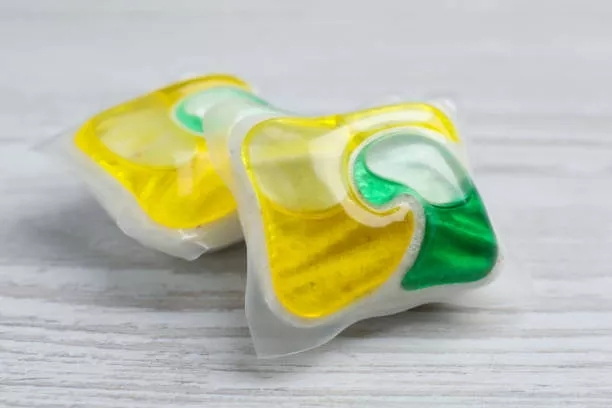Dongguan UFine Daily Chemical Co.,Ltd.
- All
- Product Name
- Product Keyword
- Product Model
- Product Summary
- Product Description
- Multi Field Search
Views: 222 Author: Tomorrow Publish Time: 11-10-2025 Origin: Site











Content Menu
● Impact of detergent formulation on allergy and sensitivity
● Practical trials and testing methods
● Regional considerations: water quality and climate
● Long-term appliance considerations
● Compatibility with different dishwasher models
● Sustainability and lifecycle assessment
● Practical recommendations by use case
● Safety, storage, and handling refinements
● Final guidance: making the decision
● FAQ
>> 1. How can I tell if my dishwasher requires a specific detergent format?
>> 2. Do detergent pods leave less residue than liquids?
>> 3. Are there differences in scent between pods and liquids?
>> 4. Will using more detergent improve results?
>> 5. Which format is better for preserving dishwasher longevity?
Dishwasher detergents operate through a combination of surfactants, enzymes, bleaches, and stabilizers. The way pods release these components can influence how quickly active ingredients reach grease and baked-on residues. Pods often rely on a multi-stage dissolution process: the outer film begins to dissolve in warm water, followed by the interior releasing surfactants and enzymes. This staged release can help prevent premature dissolution in the detergent cup, reducing the likelihood of droplets sticking to dishes.
In practice, ensuring proper loading patterns enhances the effectiveness of either format. Proper airflow within the dishwasher promotes even water circulation, which is essential for dissolving detergents and distributing cleaning agents. When dishes are crowded, there is a higher chance of detergent concentration in some areas and insufficient cleaning in others. For pods, this risk can be mitigated by selecting an appropriate cycle with adequate water pressure and ensuring the filter is clean. For liquids, careful placement to avoid direct contact with glassware and ensuring the liquid reaches the spray arms can help.

Some users may be sensitive to certain fragrance compounds or enzymes used in dishwasher detergents. Pods and liquids vary in fragrance intensity and allergenic ingredients. When choosing a detergent with sensitivity in mind, consider fragrance-free or hypoallergenic formulations. Reading ingredient lists for enzymes such as proteases, amylases, or cellulases can help determine suitability for sensitive households. Additionally, opting for phosphate-free formulations can align with environmental and health considerations.
To assess which format suits your needs, conduct a practical trial using consistent metrics:
- Cleanliness score: rate each washed load on grease removal, dried-on food, and residue visibility.
- Glassware clarity: observe streaks or film on glassware after drying.
- Dishwasher respray: note any residue on the dishwasher interior or on filter screens.
- Economic assessment: calculate cost per load based on price per unit and the number of doses or washes.
- User experience: record convenience, spill incidents, and ease of storage.
Documenting results over several weeks with multiple dish loads provides a robust basis for choosing between pods and liquids, especially for households with variable load sizes.
Regional water quality, particularly mineral content and hardness, can influence detergent performance. In areas with hard water, minerals such as calcium and magnesium can interact with surfactants, reducing their effectiveness and potentially leaving mineral deposits on dishes. Both pods and liquids benefit from water-softening additives or dedicated rinse aids designed for hard water. In softer water regions, you may notice fewer residue issues, and dosing can be slightly reduced to prevent over-sudsing.
Temperature fluctuations within the household and the environment can also affect performance. In colder climates where water enters the dishwasher at lower temperatures, pods' pre-dissolution behavior may be favorable as they are engineered to dissolve under a range of temperatures. However, a pre-wash or longer cycle can help ensure optimal results when starting from cold water.
Using the right detergent format can have long-term implications for the dishwasher's performance. Residue buildup, if any, can accumulate on the filter and spray arms, potentially reducing cleaning efficiency and increasing energy consumption. Regular maintenance, including cleaning the filter and inspecting spray arms, is advisable regardless of the detergent format. Pods, by reducing handling and measurement errors, can lower the risk of accidental leaks that might affect the interior, while liquids may require careful storage to avoid spills that attract mold or mildew.
Modern dishwashers vary in their dispensing systems. Some units are calibrated to accept detergent pods specifically, while others can accommodate liquids, powders, or tabs. Always consult the user manual to confirm compatibility. For pod-friendly models, ensure the cup or dispenser compartment is clean and free of obstructions that could impede dissolution. For liquid detergents, consider whether the dispenser is designed for bottles or squeezable containers and whether it seals effectively between cycles.

Beyond packaging, lifecycle considerations include the environmental footprint of surfactants, enzymes, and additives. Recycled content in packaging, the presence of hazardous substances, and the potential for phosphate use influence overall sustainability. Some brands offer concentrated liquids that reduce plastic usage per wash, while others provide biodegradable film for pods, or recyclable outer packaging. Consumers can compare brands by looking at sustainability reports, certifications, and third-party assessments to identify options that minimize environmental impact.
- For busy households with frequent full loads: Solid pods provide consistent dosing, minimize handling, and reduce the chance of under- or over-dosing. They are especially convenient for renters or households with children where mess control is important.
- For households with variable loads or budget constraints: Liquid detergents offer flexible dosing and can be economical when bought in bulk or concentrated formats. They are advantageous when the wash cycle varies in intensity or when you need to tailor dosing for small loads.
- For households in hard water regions seeking simplicity: Pods with a compatible rinse aid and optional water-softening agents can offer reliable results with less risk of residue. Alternatively, select a liquid with built-in water-softening components and maintain a consistent rinse aid routine.
- For households prioritizing fragrance-free options: Both formats have fragrance-free lines, but it's essential to verify ingredient lists. If fragrance sensitivity is critical, choose products explicitly labeled as fragrance-free and chemically inert in commonly used applications.
- Store pods in a dry, secure location away from children and pets. Use a child-resistant container if possible.
- Keep liquid detergents sealed tightly to prevent spills and evaporation, which can reduce cleaning strength.
- Dispose of packaging responsibly according to local recycling programs. If film packaging is not recyclable in your area, consider brands that offer alternative eco-friendly packaging.
- If a spill occurs, rinse the affected area with water and wash hands to prevent skin irritation. Some detergents can be mildly caustic; wearing gloves during handling can be prudent for households with sensitive skin.
When choosing between solid pods and liquid detergents, balance convenience, cost per load, water hardness, dishwasher model compatibility, and environmental considerations. If you prioritize ease of use and consistent results across a busy household, pods are a strong option. If you want more control over dosing, potential cost savings, and the ability to fine-tune for unusual loads, liquids may be preferable. A pragmatic approach is to try both formats for a period, track performance across several typical loads, and choose based on measurable outcomes rather than brand perception alone.
Solid dishwasher pods and liquid dishwasher soap each bring distinct advantages to the kitchen routine. Pods excel in convenience, consistent dosing, and spill reduction, making them ideal for high-traffic households or rental properties where standardization is valuable. Liquids offer dosing flexibility, potential cost savings, and adaptability for smaller or irregular loads, appealing to budget-conscious users or those with mixed dishware. The optimal choice depends on water quality, dishwasher design, daily load patterns, and personal preferences. By evaluating cleaning performance, residue formation, environmental impact, and total cost of ownership, consumers can select the option that aligns with their values and practical needs.

Check the user manual for dispenser compatibility and any manufacturer recommendations. Look for notes about pod compatibility or preferred dispensing methods.
In many cases, pods reduce the risk of measuring errors and overuse, which can lower residue. However, dissolution issues can still occur if water temperature is too low or if water hardness is extreme.
Yes, fragrance formulations vary by product. If fragrance sensitivity is a concern, opt for fragrance-free options and verify ingredient lists.
No. Following the recommended dosage is essential. Overuse can leave residue, reduce rinse efficiency, and waste resources. Underuse can lead to greasy or poorly cleaned dishes.
Neither format inherently harms a modern dishwasher when used as directed. Proper dosing, regular filter cleaning, and maintenance are more influential to longevity than the detergent format.